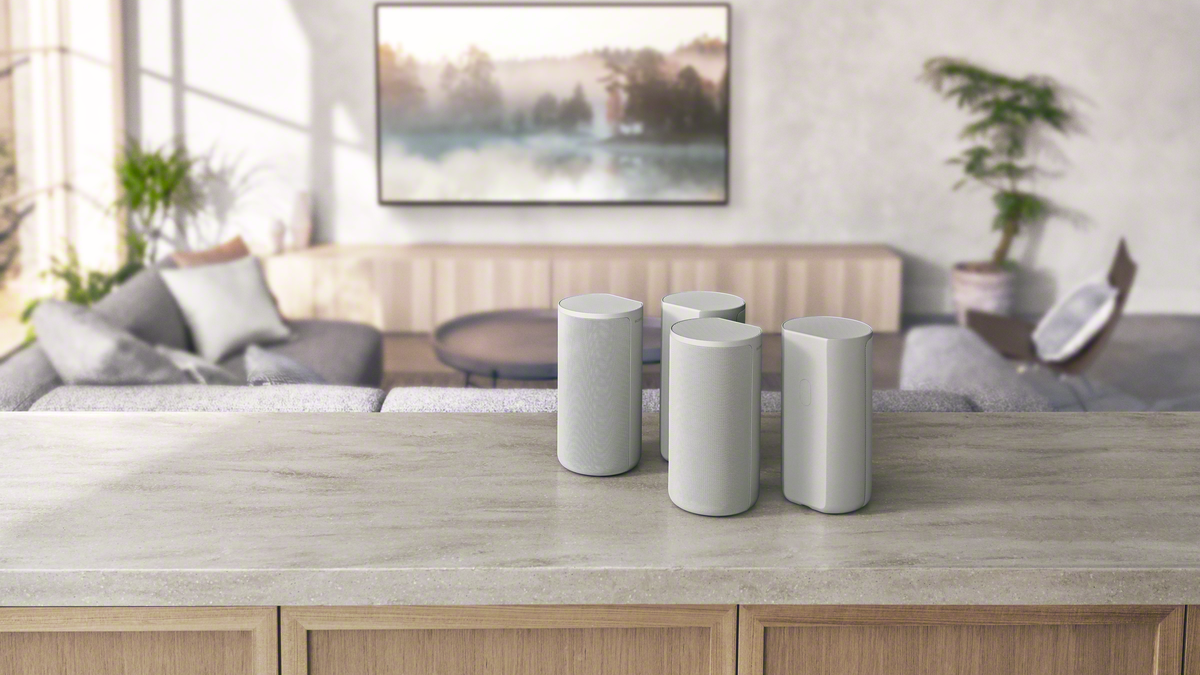TechRadar Verdict
The Sony HT-A9 is perfectly placed for someone looking for a better sound solution than a soundbar, but who isn't quite ready to invest in a full-fledged home theatre system. The wireless communication between the speakers and the base unit works flawlessly and support for all kinds of audio formats is appreciated. What's lacking is an included subwoofer and sometimes, the omission of a dedicated center speaker is missed.
Pros
- +
Immersive audio sounds great
- +
Supports all kinds of audio technologies
- +
Wireless communication between speakers and base unit
Cons
- -
Expensive compared to buying a soundbar
- -
Doesn’t come with a subwoofer
- -
Doesn’t work well with high or vaulted ceilings
Why you can trust TechRadar
Two-minute review
When it comes to home theatre, there are casual users that are satisfied with soundbars and enthusiasts that want a cinema-like experience with multiple speakers all around them.
Over the past few years soundbars are getting closer to offering a cinematic experience - especially those that include upward firing drivers, a set of rear speakers and a subwoofer, all of which deliver an immersive sound that works for most folk.
However, that won't be enough for dedicated home theater enthusiasts - and that’s where the Sony HT-A9 comes in.
The HT-A9 is a set of four wireless speakers that communicate with each other wirelessly via a tiny box that's slightly larger than an Apple TV. This box attaches to an eARC port on your TV and also supports wireless standards such as Bluetooth, AirPlay and Google Cast to enjoy audio not just from your TV but also your phone, tablet and other devices.
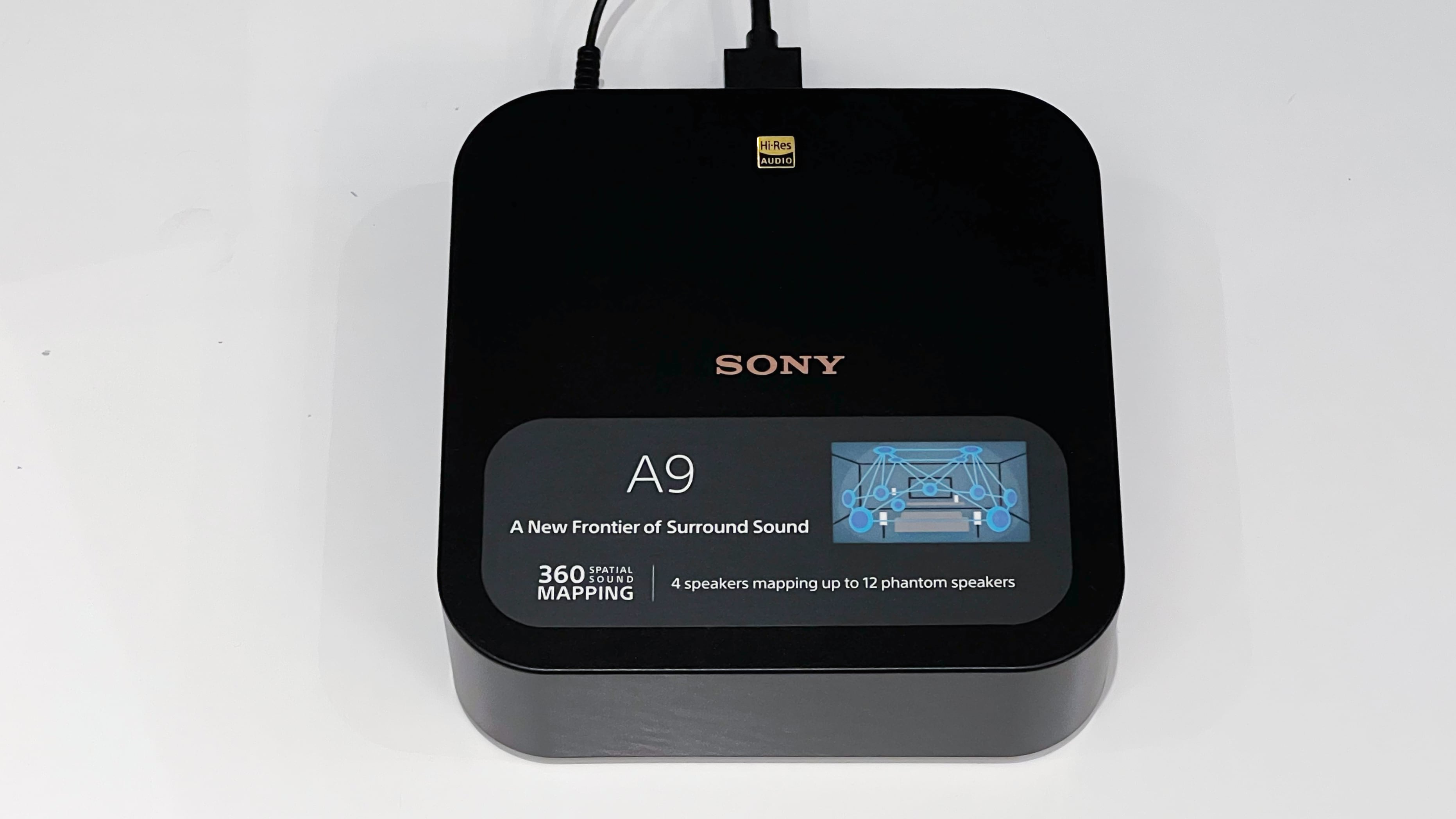
The magic of the HT-A9 speaker system is that these speakers don't need to be perfectly positioned in your room. Each speaker uses internal microphones to dynamically locate other speakers and adjust the sound level so that you feel you’re at the center of the sound dome, no matter where you’re sitting in the room.
Each of the four speakers has an up-firing speaker, a soft dome type tweeter and a wide directivity woofer along with two microphones. Working together to bounce sound off your ceilings and walls, the speakers of the HT-A9 can create an additional twelve additional "phantom" speakers for a full 360-degree sound setup.
That creates limitations in the kinds of rooms the HT-A9 can be optimally used in, but if your TV room doesn't have very high or domed ceilings, the unit performs impressively.
We tested the HT-A9 with all kinds of movies and devices. Dolby Atmos works impressively and between the apps built into our TV, an Apple TV 4K and an Xbox Series X, we found the Xbox produced the best Atmos experience. The HT-A9 also impressed us with Apple Music and Spatial Audio on the Apple TV Plus app.
Sony does not include a subwoofer with the HT-A9 setup and anyone really serious about their audio will need to shell out some additional cash for one of the two wireless subwoofers that works with the HT-A9.
You also don’t have a dedicated center channel, but if you have a fairly new Sony TV, there is a 3.5mm cable that can be connected to your TV - this then allows your TV to act as a center channel. It's a slightly inelegant solution but it’s there for someone that wants to use it.
Sony HT-A9 price and release date
Sony announced the HT-A9 along with its high-end soundbar HT-A7000 earlier this year in July, however it has only recently gone on sale. The HT-A9 Home Theater System costs $1,799.99 / £1,599 / AU$2,499 / AED 7,999.
It only comes in just one color which is light gray. Though the HT-A9 does not come with a subwoofer, Sony sells two different wireless models for it which are the SASW3 for $399 / £449 / AU$599 and SASW5 for $699 / £699 / AU4899.
Design
- A bit bulky when mounted on the walls
- Base unit is really small and can be easily hidden
- Even though the speakers are wireless, they need a power connection
The Sony HT-A9 consists of four wireless speakers and a base unit that connects to your TV while wirelessly communicating with the four speakers. This base unit measures 150mm x 150mm and has two HDMI ports on the back, along with power, Ethernet, and 3.5mm ports for connecting to newer Sony TVs. A USB port is also present but is only used for servicing the unit.
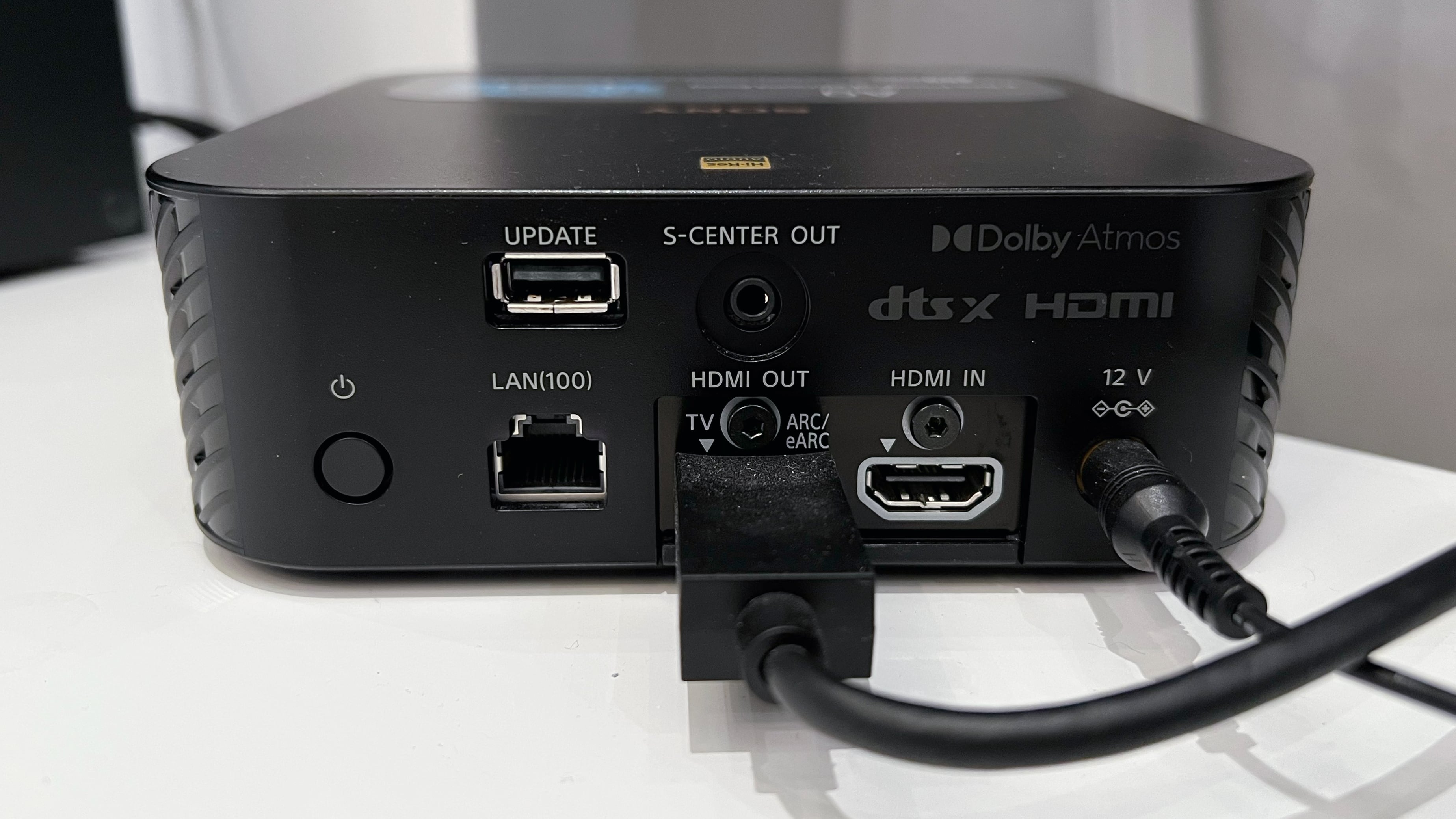
Each of the four speaker measures 313mm x 160mm (HxW), with a rounded front and a flat back for mounting easily on walls. While the four speakers communicate wirelessly to the base, they do need to be powered up and connected to an outlet on your wall.
For this reason, the speakers look better sitting on a table or stand than being wall-mounted, as you'll have electrical wires running from them to your outlet. They’re also on the bigger and bulkier side which is another reason you’d want to put them on a stand instead of the wall. Sony only makes the HT-A9 available in a light gray color even though black seems to the color preferred by most audio enthusiasts.

Setup
- The best way to connect them is using eARC port on your TV
- Setup process is extremely easy
- Included remote control isn't universal
Setting up the HT-A9 is as easy as connecting the base unit to your TV using an HDMI cable through the eARC port and powering up the four speakers. A setup process involves each speakers playing test tones that the mics on the other speakers pick up, allowing them to estimate their positions relative to each other.
Interestingly, these speakers don’t need to be equidistant from each other and can be placed at different height levels to each other, too. By learning the position of each of the surrounding speakers, the sound levels are automatically adjusted to give you the best sound experience.
Each of the four speakers has an up-firing speaker, a soft dome type tweeter and a wide directivity woofer along with two microphones. This allows the HT-A9 to create twelve of what Sony calls "phantom" speakers for a full 360-degree sound setup.
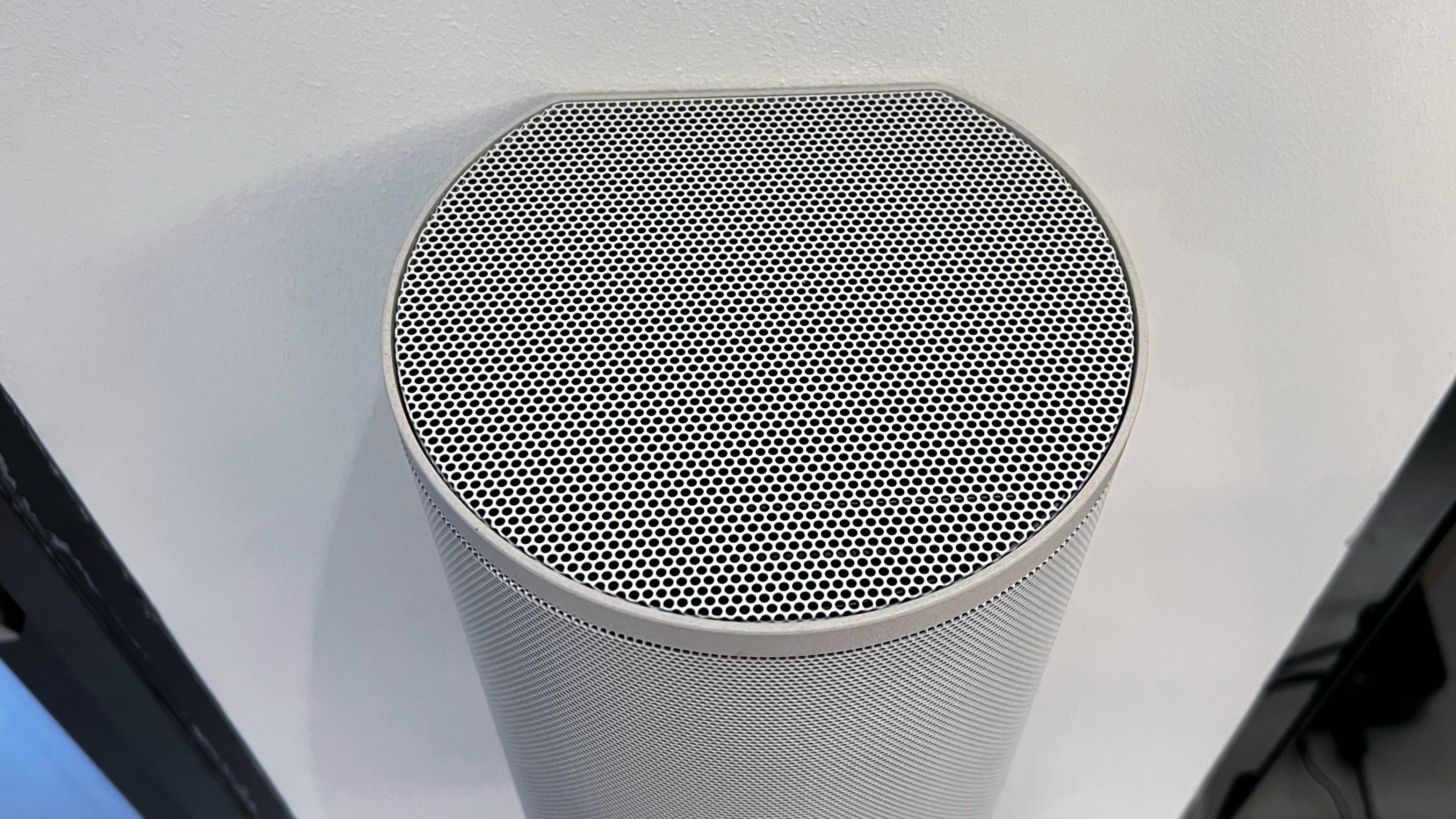
Alhough the HT-A9 has microphones and supports Google Assistant and Amazon Alexa, it can only work as an output device. You can’t speak into it using Hey Google or Alexa commands, so you'll need another Google Assistant or Alexa speaker to make voice commands.
If you have a new Sony TV, you can make it act as a center speaker focused on dialogue using the included 3.5mm cable. Ideally, Sony should have made this work using the HDMI cable as doing this means you have two wires going to your TV.
Since HDMI CEC is supported, you can easily use your TV or other device’s remote to control the audio levels on the HT-A9 - but if you want to access specific options such as voice enhancement or choosing a particular mode like movie or song, you would need the HT-A9 remote for it.
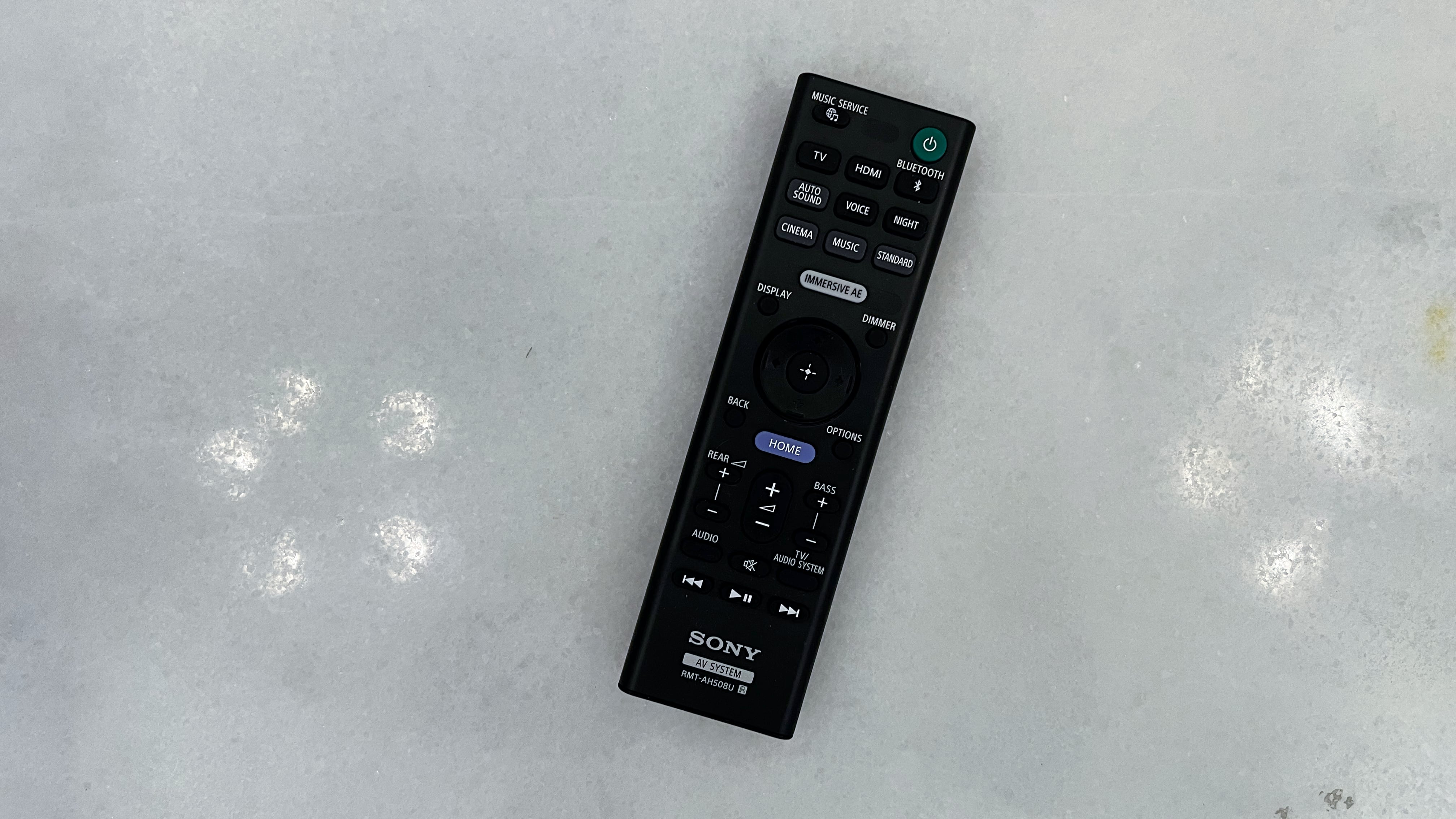
The problem with the remote is that it’s not necessarily a universal remote. Even with the HT-A9 connected to a Sony TV, there was no way to bring up the TV’s home app or launch apps such as Netflix using the HT-A9’s remote. We had to use the TV’s remote control, instead.
For that purpose, we recommend connecting all devices directly to your TV and not using the second HDMI port on the HT-A9 unless you want to deal with multiple remotes and manually switching inputs.
Audio performance
- Supports all kinds of wireless technologies
- Loud and rich sound with fantastic 360-degree sound experience
- Definitely a step up from a soundbar but can't replace a proper home-theater setup
The Sony HT-A9 supports almost all kinds of audio and wireless technology including Dolby Atmos, DTS:X, hi-res audio, AirPlay, Bluetooth, GoogleCast and Alexa. The two ports on the base station are HDMI 2.1 compliant and support 4K/120 video. One of them connects to your TV through eARC while the other can take input from a separate source.
We connected the HT-A9 to the Sony A9G OLED TV using the eARC port, which brought all audio from the TV back to the HT-A9. This included audio from the Apple TV 4K and the Xbox Series X that were directly connected to the TV using HDMI cables.
The overall sound on the HT-A9 is loud and rich and easily covered our living room. It offers decent bass out of the box, but if you’re looking for anything more, you’ll have to invest in a subwoofer.
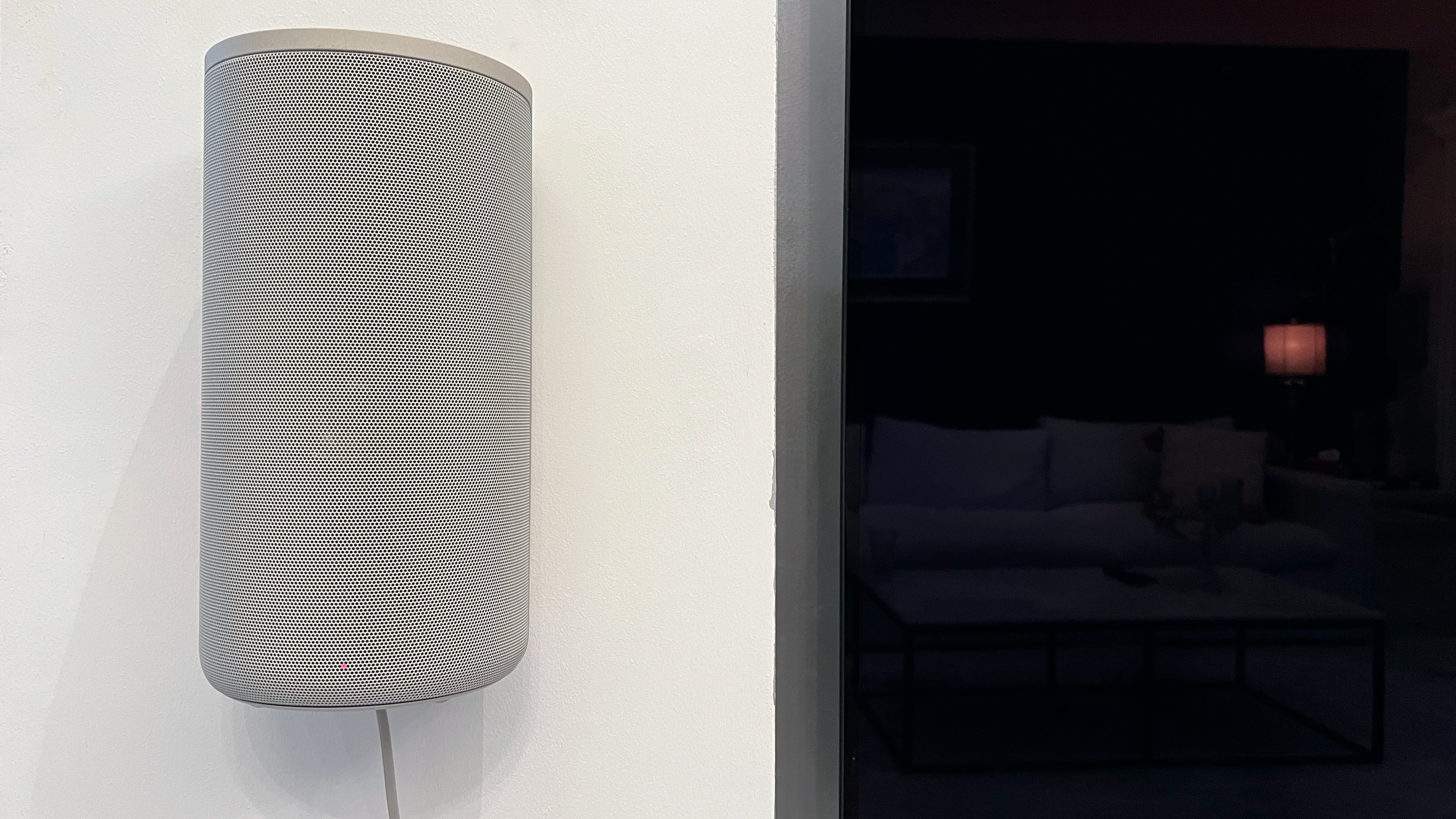
We tested a variety of apps across all three sources and the one the demonstrated the HT-A9 the best was the Dolby app on the Xbox series X which, not only has specific Atmos demos, but also clips from movies such as 1917 that highlight the incredible surround sound system.
Dolby Atmos-powered movies on Netflix also enhance your movie watching experience, and A Midnight Sky is a great example of that with subtle effects that delight. If you prefer loud noises then Michael Bay’s 6 Underground does the trick.
It was also wonderful to listen to a Spatial Audio playlist on Apple TV, with tracks like Bohemian Rhapsody adding a new dimension to your listening experience. It’s great for parties and will definitely get the conversation going with your guests.
We found the HT-A9 to offer a better sound experience than any soundbar we’ve tested - not taking into account the lack of a subwoofer. The four speakers on the HT-A9 create a better sound array with phantom speakers that work surprisingly well for an immersive audio experience.
Going into this review, we had a feeling that the HT-A9 would be an upgrade from using a soundbar, but the bigger question is whether the HT-A9 can replace a dedicated audio setup with a full sized receiver and true Dolby Atmos speaker setup?
The answer to that is no. Physical speakers present on your ceilings or walls definitely create a more realistic and immersive experience and no amount of sounds bouncing off walls can replicate that.
That being said, high-end audio systems can get really expensive and difficult to set up with wiring and placements going into your walls and ceiling. They’re catered towards a hardcore home theatre enthusiast with a dedicated room specifically for enjoying movies.
For the rest of us, the Sony HT-A9 offers an excellent listening experience without messy wires or huge receivers. It’s definitely a step up from a sound bar for anyone looking to get a more immersive experience from their TV. If you have an average sized room with regular ceilings and you want a great 360-degree sound experience, the HT-A9 will work for you.
Should I buy the Sony HT-A9?
Buy it if...
You're looking for hassle free immersive audio
The set of four speakers on the HT-A9 produce fantastic 360-degree immersive audio that sounds great with anything from Apple Music spatial audio to Netflix Dolby Atmos.
You want support for all the latest audio technologies The Sony AT-H9 works with Dolby Atmos, DTS-X, hi-res audio, and Spatial Audio, as well as Apple AirPlay 2.
You don't want a full surround sound setup
If you’re not quite ready or don’t want to invest in a full-blown dedicated audio setup with a large receiver and in-ceiling speakers, the Sony HT-A9 is a great compromise.
Don't buy it if...
Your have an older TV that does not support eARC capabilities
Without eARC, you won't be able to hook up your TV to the base box.
Your room is a little irregular
If you have high or domed ceilings, the sound can’t bounce properly to give you an immersive experience.
You’re on a budget
As good as the Sony HT-A9 sounds, it is on the expensive side and does not include a subwoofer. You can get an entry level HTIB setup for much less.

Abbas has been living and breathing tech before phones became smart or clouds started storing data. It all started when he got his very first computer- the Sinclair ZX Spectrum. From computers to mobile phones and watches, Abbas is always interested in tech that is smarter and smaller because he believes that tech shouldn’t be something that gets added to your life- it should be a part of your life.
